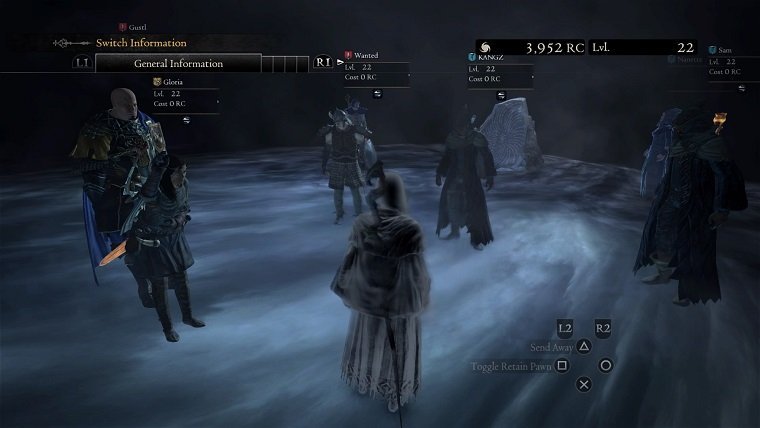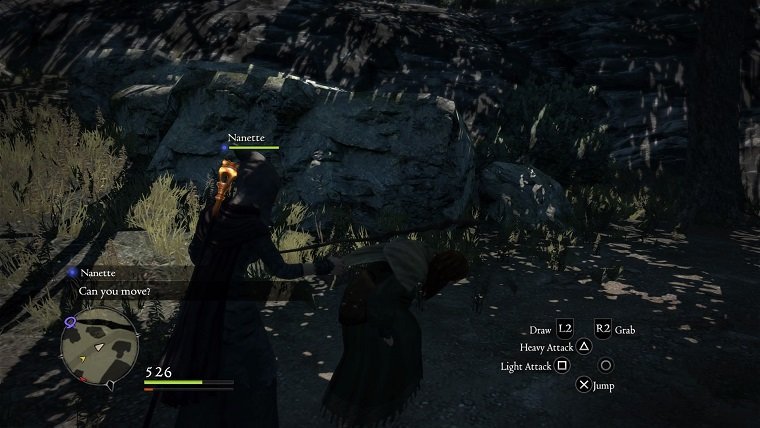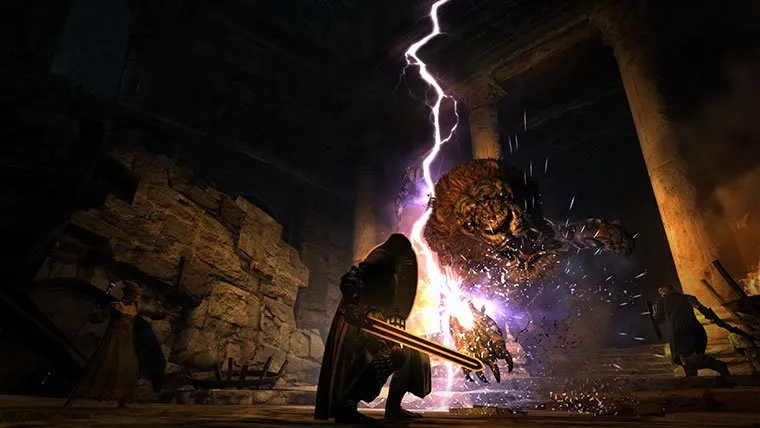When it comes to Dragon’s Dogma: Dark Arisen, age really is just a number.
Initially released in 2012 for the PlayStation 3 and Xbox 360, Dragon’s Dogma introduced its audience to a fantasy world filled with colossal beasts to slay and multiple dungeons, fortresses and towns to explore. Capcom doubled down on this one year later with Dark Arisen, which, among other features, added a massive dungeon on Bitterblack Isle, bringing any players who dared to leave back into the fold.
Three years later, a remastered version of Dark Arisen with improved graphics and frame rates arrived on the PC, and now with Capcom celebrating the series’ 5th Anniversary, fans on the PlayStation 4 and Xbox One can finally get in on the action too.

If you’ve played Dragon’s Dogma: Dark Arisen before, then don’t expect to see anything new here. In fact, you could easily read our review for the PC version of Dark Arisen and there wouldn’t be anything that differentiates these two other than the enhanced graphics and frame rates.
And while on the subject of enhanced graphics, Capcom really stepped up in this department. Everything in the PS4/Xbox One version of Dark Arisen looks cleaner, sharper and more-detailed in general. Capcom actually released a trailer last month that detailed these changes, so it’s nice to see that the game as a whole delivers on what was advertised.
Amusingly enough, this was actually my first time playing Dragon’s Dogma in any capacity. As such, while it would be easy to just end the review here, it would be irresponsible of me to not at least offer my take as someone who loves RPGs and has heard this game being hyped up for years.
First things first: I finally understand the hype. This game is good, really good. As much as I hate to make any reference to Dark Souls, it’s clear the overall aesthetic and combat are inspired by it. While that alone could make this game a worthy tribute, what truly makes Dragon’s Dogma: Dark Arisen so great is that it seeks to build off of DS’ formula, rather than merely mimic it as so many titles have done in the past. The result is a unique title that is in a league of its own.
Dragon’s Dogma accomplishes this through two of its most unique mechanics: Vocations and Pawns.
Vocations are essentially the same as the Classes you could find in any other RPG, but the way they have an impact on your character’s growth and effectiveness in battle is what helps make them so memorable. At first, you only have access to three vocations — Fighter, Strider and Mage — but you gain access to three advanced and hybrid vocations apiece once you hit Level 10. What’s neat about this is that while these jobs might be labelled as “advanced” they aren’t strictly better, especially when you consider that each vocation has a specialty that can’t be replicated by another and have the stat growths to match. For example, while a Sorcerer is technically a Mage’s advanced class, it gains less physical stats (HP and Stamina) upon leveling up and can’t use any healing spells.

Unfortunately, having character progression work in this manner can be both heaven and hell for those who want to min-max. It’s a ton of fun to be able to plan out the vocations your character will have at any given level from 1 to 200 and ensure they have the best possible stats for what you want said character to do. The issue is when you’re dealing with vocations like Magick Archer which rely on the Magic stat to deal damage but severely reduced Magic gains past level 100 (all vocations suffer from reduced gains past this point). If you’re serious about maximizing your Magick Archer’s offense then you might find yourself not using that vocation at all past level 100 until you actually hit level 200. Of course, your character will be strong enough to handle essentially anything at that point and you don’t need to actually do that, but it’s a little odd when the “best” way to build a certain vocation is to not actually use it for much of the game.
Pawns follow the same growth system as your controlled character except they don’t have access to hybrid classes, so they lack the same level of depth. But what they lack in depth, they make up for in their ability to drastically alter the way battles pan out. Pawns are essentially A.I.-controlled characters that act depending on the behavior, known as Inclination, that you assign them. For example, a Pawn with a Utilitarian Inclination will use all their skills equally, while one with Medicant will prioritize healing above all else.

It’s easy to just ignore your Pawn and treat them like a Phantom from Dark Souls, especially since they generally fulfill the same function. But to do so is to put yourself at significant disadvantage — something that I learned the hard way. I made my character a Mage, so I made my Pawn a Fighter to soak up hits. However, I didn’t give her any new equipment for about 20 levels and neglected to buy her any skills whatsoever. Needless to say, she died frequently and I was forced to run a lot. I eventually wised up and gave her new equipment, and skills and my Pawn has been taking hits like a champ ever since. Yes, your Pawn doesn’t have the same capabilities as your main character, but not treating him/her like a full-fledged party member will be setting yourself up for disaster.
Once you get your Vocations and Pawns in working order, it’s time to dive into battles — inarguably the most enjoyable aspect of Dragon’s Dogma.
Battles are done in real-time with a party of up to four (your main character and Pawn, as well as two hired Pawns). Most fights are pretty generic in flow, with your party letting loose a variety of skills and spells to handle whatever enemy they’re faced with. Sometimes an enemy will fly away and someone will need to knock it out of the air with a ranged attack, and other times an enemy will need to be knocked off-balance due to it putting up its guard. Sure, the flow changes depending on the situation, but it’s all fairly standard more often than not.
However, the fights that aren’t standard will be some of the most entertaining battles you’ll ever do in any RPG. Every so often, you’ll come across a giant beast such as a Cyclops or Griffin that has a metric ton of HP to hack through. And while it’s fully possible to simply fight them the conventional way, the secret to beating these behemoths is to jump on parts of their body and hit them directly. For example, you can knock a Cyclops on the ground, work you way behind and then jump on its back, before taking stabs at its head for big damage (assuming its helmet is off).

Conducting fights in this manner feels like you’re playing Shadow of the Colossus — albeit on a smaller scale. Regardless of scale, however, it’s immensely satisfying when you manage to bring down an enemy many times your size when it’s doing everything in its power to knock you off.
The only thing I didn’t like about combat was targeting allies or enemies with skills/spells. Instead of there being a designated button used for quickly switching between targets, you need to manually move the camera until it the screen centers on the entity you want to target. It’s already annoying just targeting one of your three allies, so imagine how trying it is when you need to target a specific part of an enemy that has in excess of seven places to hit. I often found myself cancelling a spell entirely because it took too long to target the area I wanted and the enemy started attacking me directly.
Despite that drawback, I liked essentially everything about Dragon’s Dogma…except actually interacting with its world. Don’t get me wrong: Gransys is a rich world with varied terrain, tons of NPCs and enemies to interact with and plenty of areas to discover — I just found myself frequently getting pissed off during my travels.
First off, it baffles me how Capcom could make such a large world, yet pair it with such a poorly thought out Fast Travel system. Rather than just allowing the player to immediately travel to any significant city, town or encampment by bringing up the map, you need to have a Ferrystone — which are consumable — and can only go to locations that have Portcrystals nearby. In it’s defense, this works out once you find key areas to place the Portcrystals at, but you’ll have to resort to teleporting to three fixed locations or hoofing it until then. Travelling on foot suffers from the same issue. You’ll have to walk nearly everywhere during the early stages of the game and your character just simply doesn’t have the stamina to do so. I often found myself running for a minute or two before having to stop for 15 seconds to catch my breath. Granted, I was playing as a Mage, so I had poor stamina to begin with, and again, that issue resolves itself once you find Portcrystals (and level up).

Part of the reason why I found myself irritated so often was because of my Pawn. Despite their name and lore, Pawns behave like human beings and will talk, offer advice and even reveal enemy weak points during battle. The issue is that they’ll say the same thing whether it’s the first or hundredth they’re in a situation that warrants said comment. I already know that wolves hunt in packs or that the path I’m on isn’t the way to the capital, and there’s no way I could forget that fact since I’m reminded about it every time I’m fighting the right enemy or in the corresponding area. Of course, I could just turn that feature off, but it feels more like a band-aid fix than an actual solution. Again, this is something that players will just need to grit their teeth and bare until Fast Travel becomes an option.
Awkward enemy placement is the other reason for my frequent irritation. As is customary in open-world RPGs, every area has several enemies mixed in that are stronger than the rest nearby. The difference between Dragon’s Dogma and others, however, is that they offer some way to identify them. This game doesn’t do that. Instead, you’ll only find this out once half your party is bleeding out. As a result, you’ll occasionally be forced to take detours to certain locations and these can take anywhere from just several minutes to two hours — and that’s not even counting whatever enemies you might have to fight along the way. At the risk of sounding like a broken record, Fast Travel and leveling up is, once again, the easiest way to circumvent this.
The running theme of needing Fast Travel (and levels) to fully enjoy exploration is a clear drawback here. Like I said, there is nothing wrong with the world itself, but it sucked when I wanted to explore (or even needed to backtrack) early on and knew that I just lacked the means to do so effectively, thus taking more time than I would have liked to.

The Verdict
Dragon’s Dogma: Dark Arisen is five years old now, but it’s clear that this game has the potential to stand the test of time. The complete package is certainly not perfect, but I was more than willing to grit my teeth and take its faults in stride. That said, I really want to see what’s next for the series. Dragon’s Dogma Online has been around for two years now, but with how much Capcom has pushed this series in recent years, I feel like the time for Dragon’s Dogma 2 is nigh.











Published: Oct 2, 2017 10:00 am